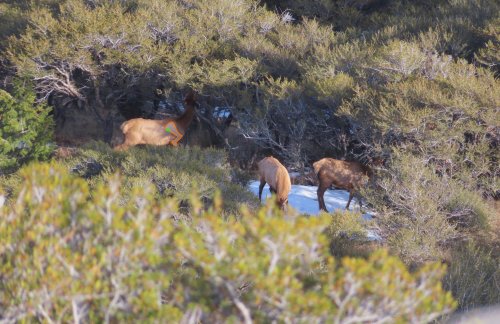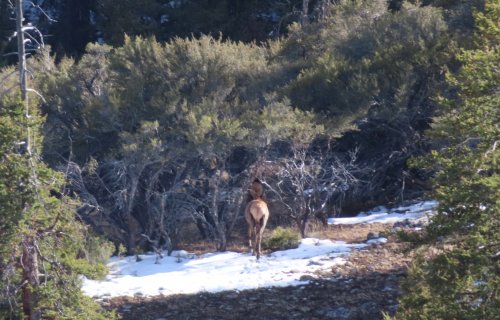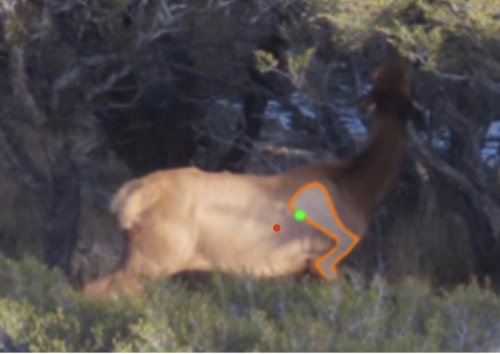Paul in Idaho
Well-known member
Last weekend while deer hunting, I had the opportunity to observe a herd of elk for more than 30 minutes less than 250 yards away. It was great to be able to watch them for so long, and I heard cow talk and even bugling.
I have a late season cow elk tag for the area, and was thinking about how to hunt the steep slopes covered in tall, dense mahogany. It seems the only way to get a clear shot is to be high above like I was that day. This photo doesn't look like I'm all that much higher, but I was 300 vertical feet higher on the slope than the herd, about a 25˚ angle.
Good shot placement will be important since blood trailing through mahogany would be difficult at best. I'm thinking a double lung hit is minimum and breaking a shoulder would be helpful if possible.
Here's a photo with where I think I'd need to hit to anchor this elk. I think the high entry would ensure the angle would hit both lungs, not go underneath the far one. There's also a good chance I could hit at least one if not both shoulder or upper leg bones. I use monolithic copper bullets in a .30-06.
Do you agree with my thinking on fast lethality and the selected shot placement?

And here's another photo showing how tall the mahoganies are and how fast a poorly hit elk could become invisible.

I have a late season cow elk tag for the area, and was thinking about how to hunt the steep slopes covered in tall, dense mahogany. It seems the only way to get a clear shot is to be high above like I was that day. This photo doesn't look like I'm all that much higher, but I was 300 vertical feet higher on the slope than the herd, about a 25˚ angle.
Good shot placement will be important since blood trailing through mahogany would be difficult at best. I'm thinking a double lung hit is minimum and breaking a shoulder would be helpful if possible.
Here's a photo with where I think I'd need to hit to anchor this elk. I think the high entry would ensure the angle would hit both lungs, not go underneath the far one. There's also a good chance I could hit at least one if not both shoulder or upper leg bones. I use monolithic copper bullets in a .30-06.
Do you agree with my thinking on fast lethality and the selected shot placement?

And here's another photo showing how tall the mahoganies are and how fast a poorly hit elk could become invisible.

Last edited:





